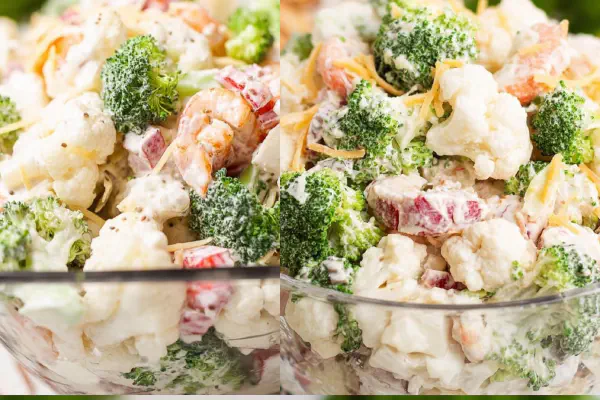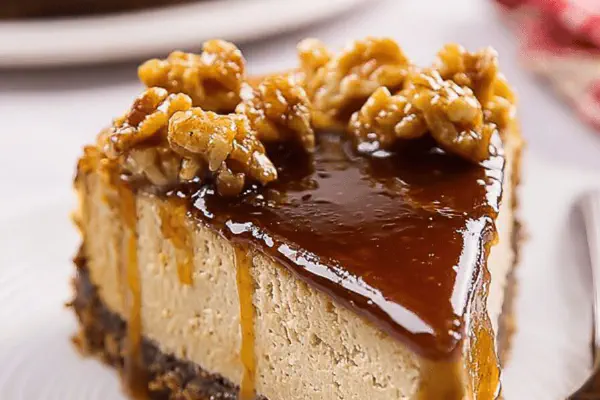Sweet Potato Bacon Quiche

E
By Emma
Certified Culinary Professional
•
Recipe tested & approved
A rustic quiche built around tender roasted sweet potatoes, crispy bacon, and melted Gruyere cheese in a flaky pie crust. This version swaps heavy cream for half and half to keep richness just right without heaviness. Roasted onions mingle with sweet potato sweetness, while rosemary and parsley bring herbaceous depth and balance. The crust pre-bakes till faint golden spots appear signaling just-right readiness. The custard spills over the filling, setting firm but silky. Final cheese topping melts under residual heat. Comforting, slightly smoky, with an earthy tang. Timing and sensory cues prioritized over rigid clocks to guide through each stage and avoid soggy or rubbery bites.
Prep:
32 min
Cook:
35 min
Total:
67 min
Servings:
8 servings
#quiche
#sweet potato
#bacon
#Gruyere
#American
#baking tips
Sweet potatoes, roasty and sweet, have this comforting heft that begged to be the star of a quiche without drowning in over-rich custard. Been there, done underwhelmed until cracking the code on roasting times and custard to filling ratio. Love that crispy-fall-apart pie crust edges sticking out, no fuss, forgiving uneven folding. The interplay of smoky bacon crunch, aromatic rosemary, and silky cheese melting just so… purely satisfying. Tossing parsnip in the mix once added an earthier counterpoint, totally recommend. Getting the laughs right–tender potatoes, firm yet creamy custard, crust with tiny crunchy golden spots–requires trust in eyes and touch, not alarms. Don’t overmix eggs or add too much custard. Angles, sounds, smells guide the way here, every bake slightly unique but always soulful.
Ingredients
- 1 unbaked deep 9-inch pie crust
- 1 1/4 pounds sweet potatoes, peeled and diced
- 1 medium yellow onion, coarsely chopped
- 2 tablespoons extra virgin olive oil
- 1/2 teaspoon freshly ground black pepper
- 6 slices thick-cut bacon, cooked crisp and crumbled
- 2 tablespoons fresh parsley, chopped
- 4 large eggs
- 1 cup half and half, or substitute whole milk with 2 tablespoons cream
- 1 teaspoon fresh rosemary, finely chopped
- 1 teaspoon fine sea salt
- 1 1/2 cups Gruyere cheese, divided
- Twist: Swap one sweet potato for a parsnip for earthier sweetness and texture
About the ingredients
Sweet potatoes stand up well roasted, lending their creamy sweetness and slight firmness; parsnip offers slightly dense texture and subtle bitterness if you want complexity. Onion softens and sweetens when roasted, but watch it carefully; burnt onion brings harsh bitterness. Olive oil works best for roasting flavor and prevents drying. Bacon needs crispness to add texture and fat rendering for flavor; stovetop or oven works, but drain excess fat to avoid greasiness. Half and half balances richness better than cream or milk alone; whole milk with cream substitute cuts down cost and maintains body, but pure milk tends to thin custard and cause watery bake. Rosemary must be fresh, finely minced to avoid overwhelming or awkward bites; dried is too harsh. Gruyere must be shredded fine for even melting but resistant to clumping. Salt is vital but tweak to bacon saltiness. Pie crust: homemade preferred for flakiness; store-bought needs pre-baking to prevent sogginess and slippery bottom.
Method
- Oven at 350°F but trust the crust’s color and firmness, not timer alone. Unwrap pie crust and nestle into deep 9-inch dish. Rustic edges, no fuss; if you want neat, pinch and fold but avoid overworking dough or tears. Fork-pierce bottom and sides several times, stops bubbling and sogginess later. Bake 8-12 minutes until faint golden flecks appear. Remove; crust should smell nutty and look just set, not browned hard.
- Toss diced sweet potatoes and onion in olive oil + pepper; aroma starts uplifting immediately. Spread on rimmed sheet single layer avoids steaming. Bake 22-27 minutes, stirring once halfway, until fork slides into tender cubes but holds shape. Don’t let caramelize black or mushy. Remove when edges begin slight crisp. Let cool a bit.
- In large bowl, combine cooked bacon, parsley, eggs, half and half, rosemary, sea salt, and 1 1/2 cups Gruyere. Whisk lightly until mixed but not frothy; air bubbles invite cracks. The salt brings out subtle sweetness, rosemary adds pine-y freshness. Toss gently to fold in cheese evenly but keep some texture.
- Sweet potato mixture scooped into pre-baked crust, spread evenly but don’t pack. Sheltered pocket for custard to seep without overflow or gaps.
- Pour egg mixture over potatoes slowly. Stop when custard barely brushes top edge of crust. Excess spills over edges, burns, waste. Custard level is visual guide here; some leftover is expected and intentional. This prevents sogginess and fissures.
- Bake quiche 25-30 minutes until center jiggles like gentle wave; not liquid but soft. A toothpick will come out nearly clean but slightly moist. If crust edge gets too brown early, shield with foil tent. This protects and helps gentle even cooking.
- Remove quiche from oven, immediately sprinkle remaining 1/2 cup Gruyere on top. Cheese melts from radiant warmth forming gooey golden blanket without extra baking. If too cool, cheese clumps or stays dull. Serve warm or room temp.
- If substitutions necessary: dairy-free use coconut cream and dairy-free cheese but reduce moisture in potatoes. For crust alternative, sturdy gluten-free crusts or phyllo stacks work but bake times vary.
- Common hiccup: under-roasted potatoes make custard watery, over-roasted lead to bitterness. Test bites halfway through roasting. Onion browning adds depth but don’t burn. Bacon must be crisp to prevent fat pooling later.
- Final tip: rest quiche 10-15 minutes after baking before slicing. Allows filling to settle, makes slicing cleaner. Warm leftovers heat slowly in moderate oven or stovetop pan to keep custard texture.
Cooking tips
Start with preheating but focus on visual signals–crust golden spots, sweet potato fork tenderness, custard jiggle. Docking crust with a fork breaks steam bubbles, crucial for crisp base and avoiding watery bottom. Roast sweet potatoes and onions separately to control caramelization; stirring halfway encourages uniform cooking and avoids burnt edges. Combine wet ingredients with cheese last to preserve texture and prevent watery mixture. Pour custard over potatoes gently, stop when near crust edge; overflow cooks unevenly and burns. Bake with monitoring; if edges overdarken, low and slow with foil shield is your friend. Key: custard sets firm but wobbly; toothpick test helps with this tactile cue. Topping extra cheese post-bake uses residual heat, melts cheese without drying it out or burning. Rest quiche before slicing; it firms and prevents crumbs or filling spill. Adapt times slightly based on oven quirks, altitude, or ingredient size chunks. Don’t rush slicing or hot molten cheese may run. Always have foil, timer, and poke-test ready. Practiced instincts here trump strict times every time.
Chef's notes
- 💡 Prebake crust just till faint gold spots show; no dark edges. Fork-dock often prevents bubbling, soggy bottom. Watch color, smell nutty not burnt. Timing varies oven-to-oven. Rustic edges hold custard better.
- 💡 Roast sweet potatoes and onions on single layer, tossing once mid-bake. Avoid blackening edges or mushy cubes. Aromas shift from raw to sweet roasting smells. Pull when edges get slight crisp, tender inside. Crucial step for custard texture.
- 💡 Whisk egg, half and half, herbs, salt with cheese last. Light folding keeps cheese bits intact; too much whisking invites cracks from air pockets. Fresh rosemary finely chopped keeps pops without harsh bites. Salt adjusts to bacon saltiness; taste as you go.
- 💡 Pour custard slowly over potatoes; stop when it barely brushes crust rim. Overflow burns, leads to waste. Custard level visual guide prevents soggy bottom + cracks. Leftover custard expected; don’t pour all in.
- 💡 Bake at monitored heat. Center jiggles like gentle wave means set but soft. Toothpick should come out nearly clean, moist tip allowed. If crust darkens early cover loosely with foil. Low and slow after shield helps even cooking and prevents dryness.
Common questions
Can I substitute parsnip for sweet potato?
Yes. Parsnip adds earthier note and denser texture. Cuts sweetness. Adjust roast times slightly; parsnip softens faster. Use one-to-one swap.
What if custard cracks or is watery?
Overmixing eggs traps air causing cracks. Underroasted potatoes add moisture, thin custard. Test roasted veggies for doneness. Avoid whipping eggs frothy.
How to store leftover quiche?
Cool fully, wrap tight. Refrigerate 3-4 days. Reheat low oven or stovetop pan slow to keep texture. Freeze yes but wrap to prevent freezer burn; defrost slow overnight fridge.
Can I use dairy alternatives?
Coconut cream works but watch moisture levels. Dairy-free cheese melts differently; choose brands suited for baking. Crust needs sturdy gluten-free or phyllo alternative if avoiding wheat. Times vary; watch cues closely.



